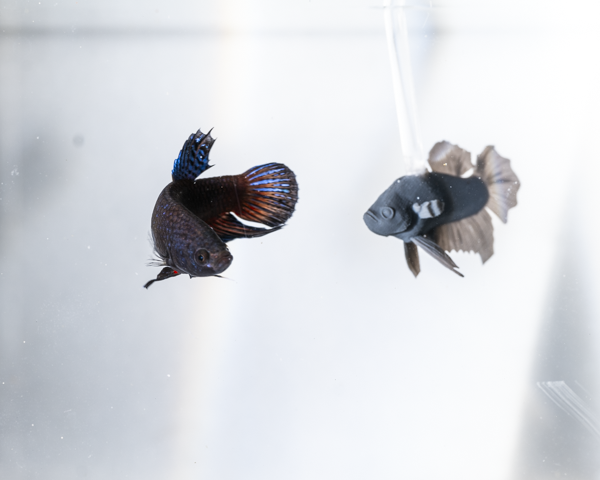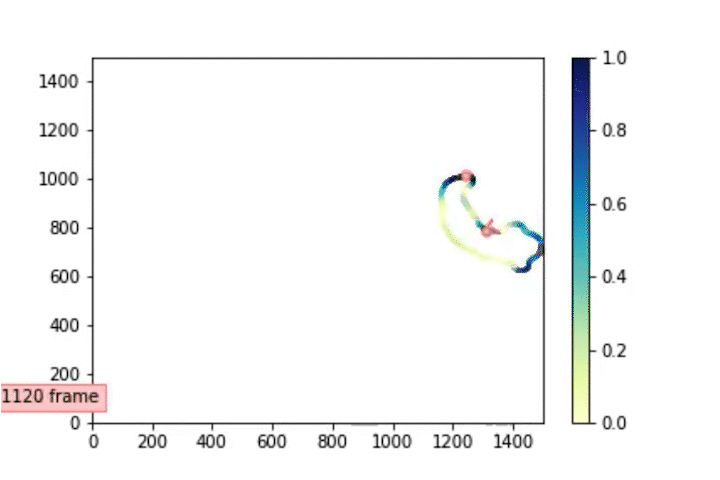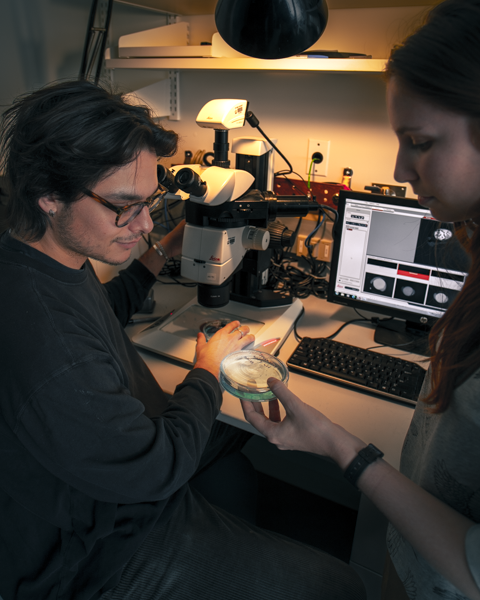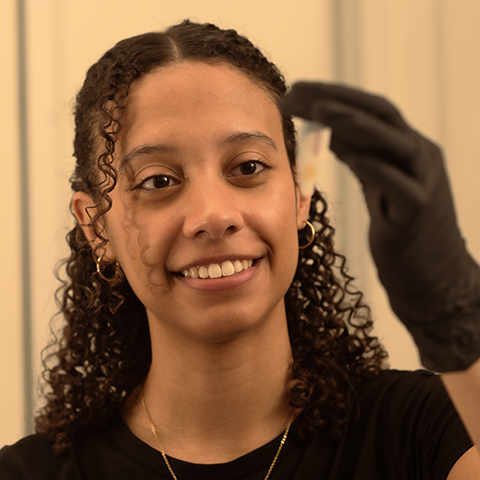Graduate student Claire Everett in the Bendesky lab wants to understand the origins of aggression in the brain. That’s why she’s studying Betta splendens, a gorgeous fish bred for centuries in Thailand to fight. Everett, a science illustrator and artist outside the lab, creates animations and uses 3D-printed plastic fish to spur a fish’s aggressive behaviors, from the flaring of its gills to the beating of its tail. She’s exploring which visual features — which changes in its opponent’s shape or movement, for instance — trigger these behaviors. Using new tools to investigate the brain of this unusual animal model, Everett hopes that her work will ultimately provide a deeper understanding of what happens in our own brains when clenched fists and furrowed brows escalate toward violence.
Photos by Thomas Barlow

Everett stands between rows of fish tanks.

A betta fish displays aggressive behavior toward a plastic, 3D-printed fish model.

A contour map reveals the shape and movements of a fish.

Everett and Research Assistant Alec Palmiotti check fish embryos under the microscope.

A slide holds cross-sections of a fish’s optic tectum, a brain region devoted to vision.

Everett watches a betta fish swim.


